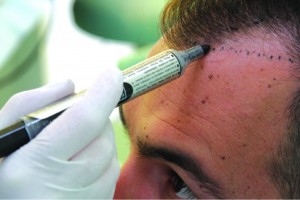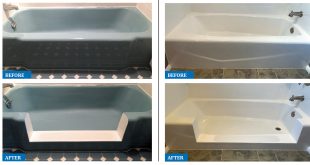By Alan J. Bauman, M.D.
 For many, when it comes to hair loss, a hair transplant is the only permanent way to restore a receded hairline, build back density and create a more youthful look. But despite the boost in confidence and self-image a hair transplant can deliver, many patients are reluctant to undergo this minor procedure, often due to fears of a fake or “pluggy” look, fears that the process is painful or that it may leave a visible scar.
For many, when it comes to hair loss, a hair transplant is the only permanent way to restore a receded hairline, build back density and create a more youthful look. But despite the boost in confidence and self-image a hair transplant can deliver, many patients are reluctant to undergo this minor procedure, often due to fears of a fake or “pluggy” look, fears that the process is painful or that it may leave a visible scar.
How natural looking can a hair transplant be? How comfortable is the procedure?
What is the downtime?
How can an unsightly scar be avoided?
How should I select a hair transplant surgeon?
First, what is a hair transplant?
A hair transplant is a procedure in which healthy, living and growing hair follicles are harvested from the back of the head and redistributed into the balding areas of the scalp where they will produce hair. Because follicles from the back of the head are resistant to the effects of dihydrotestosterone (DHT), the hair-killing hormone responsible for androgenetic alopecia, these follicles won’t fall out or “thin” later on, and will remain generally immune to male and female pattern hair loss. In this sense, a hair transplant offers the most permanent living and growing solution for hereditary hair loss without the hassle of a wig or weave.
Why do some hair transplants look “pluggy”?
Today’s microsurgical hair transplants are vastly superior to the primitive hair transplants of the 70’s, 80’s and early 1990’s. Back then, hair restoration was still a relatively new field with few specialists and no board certification, and the procedures were more “crude”—hindered by available tools and techniques.
In these older procedures, large punches, “plugs” or minigrafts of scalp containing large numbers of follicles were placed into rows creating a unsightly “doll’s hair” result. The naturalness of the result was severely limited by the size of these skin grafts, large gaps between the grafts, a lack of proper angulation of the hair follicles, and a lack of appreciation for the attributes of a natural hairline. Patients who had hair transplants performed in the “old days” may still look pluggy, artificial or unfinished today because of the way these old transplants were performed. However today, a completely natural result is possible thanks to the artistic transplantation of grafts that contain as little as a single hair follicle. In addition, new less-invasive harvesting methods have eliminated the linear scar and improved the speed and comfort of the recovery.
Linear vs FUE: What is the newest, least invasive type of hair transplant?
FUE or “Follicular Unit Extraction” is the least invasive type of hair transplant. Over the past ten years, this new method of hair transplant harvesting continues to evolve. In the past, a strip of hair-bearing scalp was removed from the back of the head, which was then microsurgically dissected into tiny skin grafts prior to implantation. While quite efficient, this invasive procedure came with surgical risks like the possibility of wound infection, significant postoperative pain, a long activity-restricted recovery phase and a permanent linear scar.
Thankfully, the improvement of tools and techniques now allow the efficient and accurate harvesting or “extraction” of individual follicular units without the removal of strip or leaving linear scar. FUE is a minimally invasive hair transplant procedure that heals more quickly, comfortably and with less activity restrictions than old-style linear strip-harvesting. And, because there’s no linear harvest, there is absolutely NO telltale linear scar left with an FUE hair transplant, so short haircuts can be worn.
How is an FUE Hair Transplant Performed?
FUE is performed using a tiny microsurgical tool called NeoGraft—literally smaller than the tip of a ballpoint pen—to individually extract healthy hair follicles for transplantation. Because there is no major incision and no stitches or staples used, the recovery phase is quicker and more comfortable—allowing for workouts and most athletic activities to resume after just several days.
Although the NeoGraft FUE procedure is less invasive, it still takes hours to complete. A NeoGraft FUE hair transplant is performed comfortably in the office under local, relaxation-type anesthesia while the patient reclines, takes a nap, listens to music or watches TV. Snacks and lunch are provided and at any time, the patient may take a bathroom break.
Who should perform
a hair transplant?
Because hair transplantation is a safe outpatient cosmetic procedure and the number of hair transplant procedures is growing by leaps and bounds due to technical advancements such as NeoGraft FUE, there are a variety of different physicians who “dabble” in this procedure and have begun to offer this service to patients as an occasional part of their practice. These may include dermatologists, plastic surgeons, general practitioners, weight loss specialists, and even OBGYNs and dentists whose practices are not even remotely dedicated to hair restoration or the treatment of hair loss. Patients should also be aware that many practices do not routinely perform minimally invasive NeoGraft FUE but may try to steer patients toward the older, more easily performed, more invasive strip harvest procedures.
Due to the complexity of recreating a natural-looking hairline, as well as the risks of damaging or mishandling the precious hair follicles during both types of hair transplant procedures, it is highly recommended that patients seek out a specialist whose practice and surgical technicians are completely devoted to hair restoration and perform hair transplantation on a daily basis. A doctor who is truly qualified to perform a NeoGraft FUE will be board-certified in hair restoration (i.e., a Diplomate of the American Board of Hair Restoration Surgery), recommended by the American Hair Loss Association, have participated in NeoGraft FUE training activities, such as at the International Society of Hair Restoration Surgery Live Surgery Workshops, and has a comprehensive before-and-after portfolio of his own work that demonstrates natural results on a variety of patients.
Key Benefits of the NeoGraft FUE
• Least invasive hair transplant available
• No ‘telltale’ linear scar where the donor hair is harvested
• No stitches or staples to be removed
• Shorter, more comfortable recovery
• Less activity restrictions after surgery and quicker return to athletic activity
• Very short haircuts are possible after surgery
• Excellent hair growth results in experienced hands
• Soft, feathery hairlines can be created — for a natural result
The take home message is that today a completely natural result is possible. Very small “follicular-unit” grafts—many containing as little as a single hair follicle—are used to artistically restore a natural, feathery hairline shape, as well as the angle, orientation and position of hair follicles in order to create a result that truly defies detection. It is the stroke of the surgeon’s hand that meticulously creates the angle, orientation and position of each implanted follicle. A high degree of microsurgical precision, experience and a surgeon’s “aesthetic eye” is mandatory in order to achieve a natural looking result through hair transplantation.
To put things in perspective, microsurgical techniques now allow the restoration of areas as delicate and intricate as eyebrows and even eyelashes — procedures far beyond what surgeons could accomplish just a few decades ago—allowing men and women to enjoy the benefits of a full head of hair… and beyond!
The critical step for patients, however, is to seek out a qualified and experienced full-time hair restoration specialist.
BAUMAN MEDICAL GROUP
Hair Restoration for Men and Women
www.BaumanMedical.com
1.877.BAUMAN.9
Check Also
IS THERE A CONNECTION BETWEEN MY BRAIN AND MY GUT?
By Renee Chillcott, LMHC Every one of us has made a reference to our gut …
 South Florida Health and Wellness Magazine Health and Wellness Articles
South Florida Health and Wellness Magazine Health and Wellness Articles




